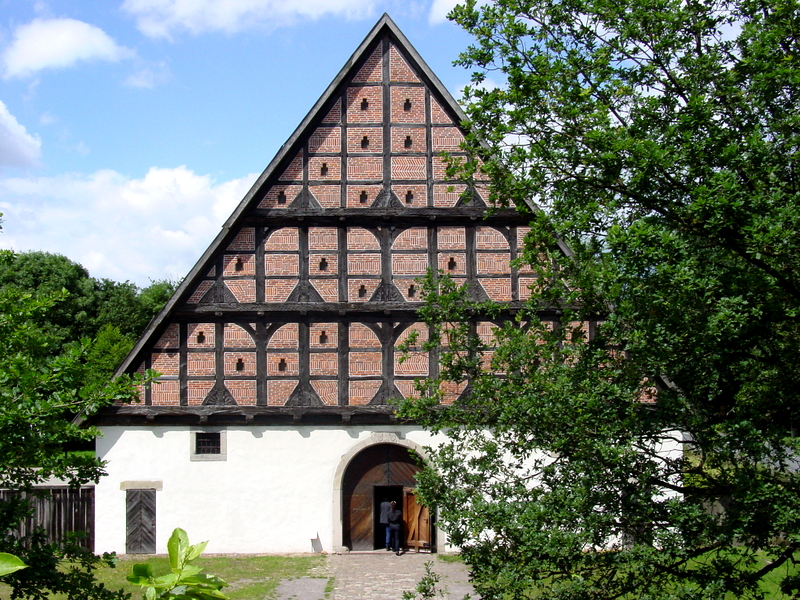Tithing Barn from Aerzen
Tithing Barn from Aerzen (Hameln-Pyrmont County), built in 1561. Re-constructed at the open-air museum between 1977 and 1980.

What the lord of the manor took from the farmers
The Münchhausen Barn was built by the mercenary commander Hilmar von Münchhausen (1512-1573), a distant relative of the fairytale-telling baron. As he came into wealth, he let a castle be built in the style of the Weser Renaissance and a large tithing barn close to it, in order to store the rent in kind of his dependent farmers. The coat of arms and the initials of the builder can be found in the keystone of the barn’s gate arch, as well as the masonry seal of the contractor responsible for the construction, Cord Tönnies.
The establishment was managed like collective farm, from the time that Münchhausen family had to leave the Aerzen area in 1660. In 1966, the combined lands of 400 hectares were divided into eight farms. However, the tithing barn and the leftover 14 hectares of land continued to belong to the Aerzen community.

Exhibitions up to the rafters
The barn has already been approved for destruction when it could be saved by transferring it to the open-air museum, where it is now used as the entry building and exhibition hall, as well as magazine. The objects in the museum’s collection that are particularly worthy of protection can be found in the cellar, along with the archival records. Continuously changing cultural exhibits about the history are on display on the first and second floors, while portions of the historical collection in the fields of furniture, clocks and clothing can be viewed in the floors above those.
